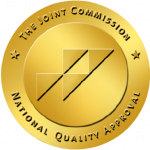As marijuana use increases year after year, so does the potency of the psychoactive component THC in the drug. Addiction psychiatrists foresee issues with the high potency of currently consumed cannabis. Elizabeth Stuyt, M.D., provides meaningful feedback on the current rising potency in marijuana.
Stuyt points out that the issue with current marijuana sales is that “they utilize the words ‘cannabis’ and ‘marijuana’ for everything without differentiating between the different forms of cannabis that can have very different effects on the mind and body.”
A Concerning Trend
There is an interesting juxtaposition between the support for marijuana legalization in the early 1960s-1980s and the support for marijuana legalization in certain states today. It is necessary to consider that early advocates for legalization supported a THC content (the psychoactive component of the drug that makes you feel “high”) of less than two percent. This low dose of THC suggests that the rest of the ratio of the drug included high levels of CBD, the non-psychoactive but relaxing component of cannabis.
Prior to the 1990s, the THC content was less than 2%, but it grew closer to 4% in the 1990s, and “in 2015 there has been a 212% increase in THC content in the marijuana flowers.” The trend continued in 2017, as the most popular cannabis products sold at dispensaries in Colorado “had a range of THC content from 17-28%.”
With such high levels of THC, today’s cannabis plants are “incapable of producing much CBD, the protective component of the plant so these strains have minimal CBD.” Certain strains of marijuana have as little as 0.09-0.2% of CBD. While there is research on the health benefits of CBD, there is no research that states high levels of THC are beneficial in treating any medical condition.
Risk of Marijuana Addiction
The issue with current support for the legalization of marijuana is that the drugs that are being advocated for do not have consistent and approved component ratios. The current rising potency of weed is dangerous. There are no concrete government regulations on the cannabis industry. With gaps in government regulations, the cannabis industry has been able to take a “page from the tobacco and alcohol industries’ playbook and developed strains of marijuana and concentrated marijuana products with much higher concentrations of THC, the psychoactive component that causes addiction.” While it may seem like those in the cannabis industry would want to sell less potent products to make more money, “the more potent a drug is, the stronger the possibility of addiction and the more likely the person will continue to purchase and use the product.”
The addictive characteristics of marijuana are often debated. With “increased potency of THC there is a definite recognized withdrawal syndrome which includes increased anger, irritability, depression, restlessness, headache, loss of appetite, insomnia, and severe cravings for marijuana.” In 2015, a study done by an English research team demonstrated that “high potency cannabis use is associated with increased severity of dependence, especially in young people.”
To ensure that cannabis users can know when they are consuming THC, “new regulations beginning in 2019 require that all cannabis packaging in the state of Colorado must have a universal ‘THC’ symbol on the label with the written warning ‘Contains Marijuana. Keep away from Children.’” Essentially, all THC-containing products need to have the universal THC symbol marked on at least one side of what is considered a standard serving of marijuana.
Who Is Most At Risk?
As marijuana becomes more potent, more research needs to be conducted. High THC concentrates “raises concerns that the consequences of marijuana use today could be worse than in the past, particularly among those who are new to marijuana use and in young people, whose brains are still developing.” Experts still do not know the long-term consequences of high concentrations of THC on the brain and body, especially the impact on the developing brain. While there have been recent increases in emergency department visits for individuals who tested positive for marijuana, it is hard to determine if it is related to the rising potency. There is also an interesting perspective that experienced users may adjust the amount they smoke and “how much they inhale based on the believed strength of the marijuana they are using, but they are not able to fully compensate for variations in potency.”
At Boardwalk Recovery Center, we stay up to date on the latest changes in recreational drugs. We are aware of the rising potency of marijuana and are here to help you combat issues associated with the high THC concentration.
As cannabis products continue to grow in THC strength, addiction becomes a more pervasive issue, especially among young people and new users. Our dedicated team of specialists is committed to offering comprehensive marijuana treatment programs tailored to address the specific impacts of high-potency THC. If you or someone you know is dealing with marijuana addiction, we encourage you to contact us today. Together, we can help you find a path to recovery and support your journey toward a healthier, addiction-free life.
Life can be good again and we’d like to show you how.





